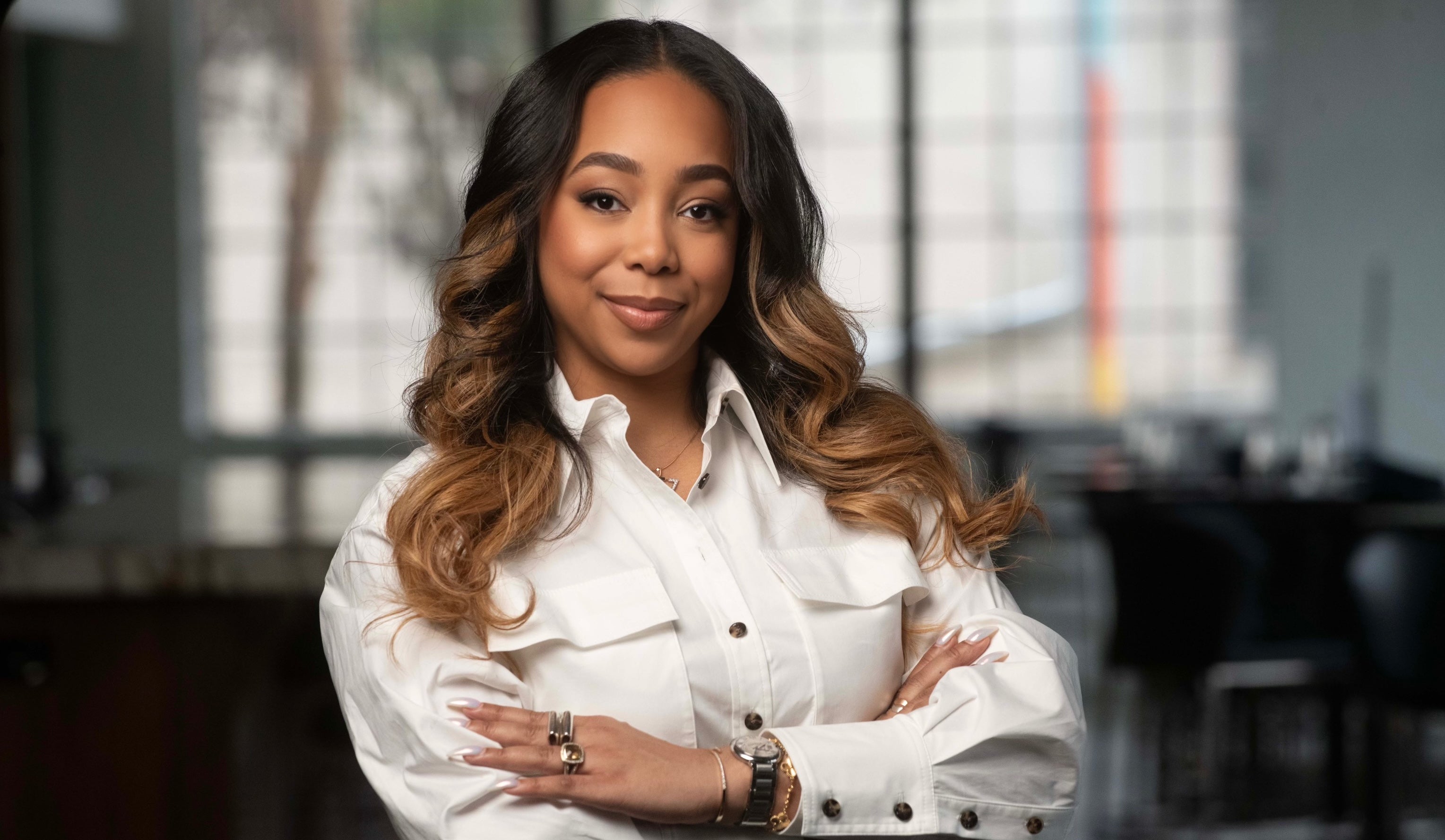For Kai Williamson, honesty is the best quality—a trait she developed through her first career: running a youth nonprofit. After graduating from Georgia Tech with a master’s in public policy at age 20 and launching an image consulting business (in response to requests from former classmates), Williamson soon found herself taking over her mother’s charity, Youth Enhancement Services Inc. In her five years at the helm, she grew the three-person organization into a team of 22—a training ground for scaling a business, building a team and taking intense financial accountability.
After an image consulting client asked for help with their interiors as well, Williamson started her own firm, Studio 7 Design Group, in 2014. Over the past decade, the Atlanta-based company has expanded to a team of nine women—but that level of growth was far from a foregone conclusion for the designer, despite her entrepreneurial streak. “I had no idea that it would scale to this size. I had no idea that I would enter the world of commercial design. I definitely only had the intention of working on residential projects,” she tells host Kaitlin Petersen on the latest episode of the Trade Tales podcast. “If I’m completely honest, there wasn’t a plan. I did not know what to plan for, because although I had studied technical elements of the industry, that’s very different from understanding the ethos and the growth trajectory of a design firm.”
Her outsider’s approach has inspired some valuable lessons, especially regarding billing. After a trial-and-error process testing various fee structures, she ultimately found that the administrative burden of hourly billing was a drain on her team’s productivity; instead, she landed on a three-tier, cost-per-square-foot flat rate based on the scope of work—one rate for furnishings, another for furniture and light renovation, and a third for new-build projects. Williamson also doubled down on a clear but firm cost-plus model and found a straightforward way to explain her fee structure to clients: “Our markup, which is the standard 25 percent, is super transparent. I’m not going back and forth around it. But the markup is really where you generate profitability and where you are covering your operational and administrative costs. That per-square-footage cost is covering our actual design time—sourcing, selecting, presenting, building elevations, building 3D models, drawings—as compensation for our technical and creative ability.”
Elsewhere in the episode, the designer shares why she’ll always let clients change their minds and share new inspiration, how she’s finding new ways to put company culture at the forefront, and how getting published in Architectural Digest after a decade of under-the-radar work has changed the leads coming in.
Crucial insight: Williamson’s tip for designers beginning to grow their firm: Hire someone at your level or higher—not an assistant or junior designer. “You can really create capacity for growth and learn from them, versus hiring someone to do the tasks that you don’t like or want to do,” she says. “I just don’t feel like that’s where you become stronger as a company. Ultimately, that first hire [should be] someone who can be a creative sounding board, like, ‘Hey, how should we approach this?’”
Key quote: “Clients really appreciate my honesty. I am insanely honest. I don’t know any other way to be, and I just am who I am. I think it goes back to my nonprofit days of having to be in service and working with 200 young people per year and seeing how so many elements and variables are affecting their lives. I take that same kind of energy into interior design. I care about your project. I care about the choices you’re making. I just want to give you all of the information so that I don’t take away your choice.”
Listen to the show below. If you like what you hear, subscribe on Apple Podcasts or Spotify. This episode was sponsored by Universal Furniture.





























